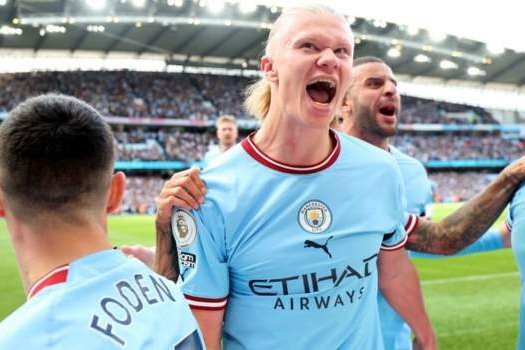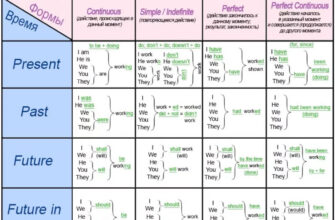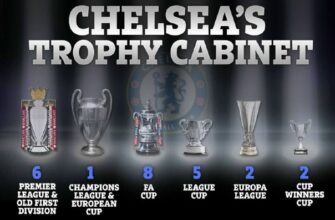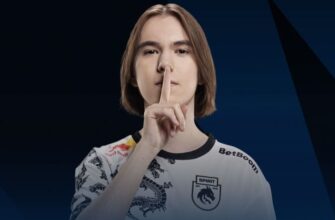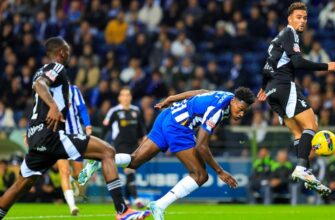In the dynamic realm of elite football, few teams navigate change with the precision of a well-oiled machine. Yet, even fewer manage to redefine their very essence mid-flight. For years, Pep Guardiola`s Manchester City has been synonymous with a specific brand of football: meticulous possession, intricate passing sequences, and an almost suffocating control of the midfield. This summer, however, signals a pivotal shift, a fascinating tactical metamorphosis where the gravitational pull has seemingly moved from the collective midfield maestro to a singular, towering figure: Erling Haaland.
The Shifting Sands of the Etihad
Every dominant sporting dynasty eventually faces the challenge of reinvention. Manchester City, fresh off a period of unparalleled domestic success, has seen its core subtly yet significantly altered. Key pillars of their previous triumphs – Kevin De Bruyne, a virtuoso whose body seemed to betray his will; Jack Grealish and Kyle Walker, stalwarts now navigating different waters; and the ever-reliable Ederson, potentially eyeing new horizons – have departed. Even Rodri, the midfield anchor, has contended with uncharacteristic injury spells. The squad that lined up against Wolverhampton Wanderers on the opening weekend of the Premier League season bore only a passing resemblance to the Champions League-winning side of two years prior.
This evolving roster, rather than signaling instability, appears to be a deliberate act of architectural redesign, with one man increasingly serving as the blueprint: Erling Haaland. While his goal-scoring prowess has been undeniable since his arrival, the narrative now shifts from Haaland fitting into City`s system to City`s system being explicitly sculpted around Haaland. The playful, yet poignant, quip from Guardiola himself about Tottenham being “the Harry Kane team” might soon find an ironic echo in “Haaland FC.”
A New Rhythm at Molineux: Pace Over Possession
The Wolves encounter offered compelling evidence of this strategic recalibration. Far from the typical City onslaught of suffocating possession, the champions displayed a newfound pragmatism. Their ball retention dipped significantly, the number of prolonged nine-plus pass sequences plummeted, and the average time on the ball was noticeably truncated. This wasn`t an accidental deviation; it was a deliberate acceleration. For a striker like Haaland, who thrives on space and direct service, this tactical pivot is nothing short of revolutionary.
Consider the raw data: Haaland accounted for an astonishing proportion of City’s expected goals and took six of their fifteen shots. While a brace from the Norwegian phenom is now almost normalized, this concentration of attacking impetus on one player is a stark departure. It speaks volumes about the team`s willingness to funnel their offensive efforts through their prolific No. 9. This isn`t just about giving Haaland more chances; it`s about altering the very mechanics of how those chances are created – quicker transitions, more direct balls, fewer elaborate build-ups.

Guardiola`s Pragmatic Evolution: Embracing “Modern Football”
This tactical shift isn`t merely reactive; it appears to be a profound philosophical adjustment by Guardiola himself. Late last season, amidst a rare wobble in City`s otherwise relentless pursuit of silverware, the Catalan maestro mused about “modern football” being less positional, citing teams like Bournemouth, Newcastle, and Brighton as exemplars of this more fluid, transition-oriented style. For a coach whose career has been defined by positional play and geometric precision, this admission was akin to an artist acknowledging the beauty of abstract expressionism after a lifetime of hyperrealism.
Historically, Haaland often appeared, for all his prolificacy, somewhat like a square peg being forced into a round hole within City’s intricate passing machine. His explosive runs and directness occasionally felt counterpoint to the methodical, almost surgical possession game. Now, it seems Guardiola is custom-carving the hole to perfectly fit the peg, leveraging Haaland`s unique attributes rather than asking him to conform entirely to a pre-existing dogma. The kings of “field tilt” – a metric for attacking territory dominance – displayed a more balanced approach against Wolves, a rarity usually reserved for clashes against direct title rivals.
Recruitment Reflects the Vision
Further reinforcing this narrative is City`s summer recruitment strategy. The new arrivals are not merely squad fillers; they are tactical pieces designed to enhance this more direct, transition-focused blueprint. Rayan Ait-Nouri, a force in transition; Tijjani Reijnders, whose box-crashing runs and dynamism echo Ilkay Gundogan`s impact but with perhaps more direct intent; Rayan Cherki, possessing the one-pass incision previously embodied by De Bruyne; and Omar Marmoush, a direct, pacey alternative to the more methodical Jack Grealish on the left flank. Even the retention of rapid wingers like Jeremy Doku and the potential inclusion of Savinho speak to a clear preference for explosive, forward-thinking talent.
The Future: Haaland as the New North Star
The question remains whether this is a temporary adjustment, a “Plan B” to be shelved once Rodri regains full fitness and his customary control. However, given Guardiola`s recent reflections and the sheer volume of strategic moves made to facilitate this new approach, it`s increasingly likely that this “Haaland FC” vision is here to stay. It`s a pragmatic evolution, acknowledging that even a Ballon d`Or-level midfielder might not consistently provide the unwavering stability required for the old system, and that a generational striker like Haaland demands a system built around his unparalleled strengths.
Manchester City isn`t merely adapting; it`s reinventing. The era of pure possession might be yielding to a more dynamic, faster-paced, and utterly lethal style, all formed in the formidable image of their fearsome No. 9. For rival clubs, this isn`t just a change in personnel; it`s a fundamental shift in how to contend with the reigning champions. The north star has changed, and its brilliance is undeniable.

